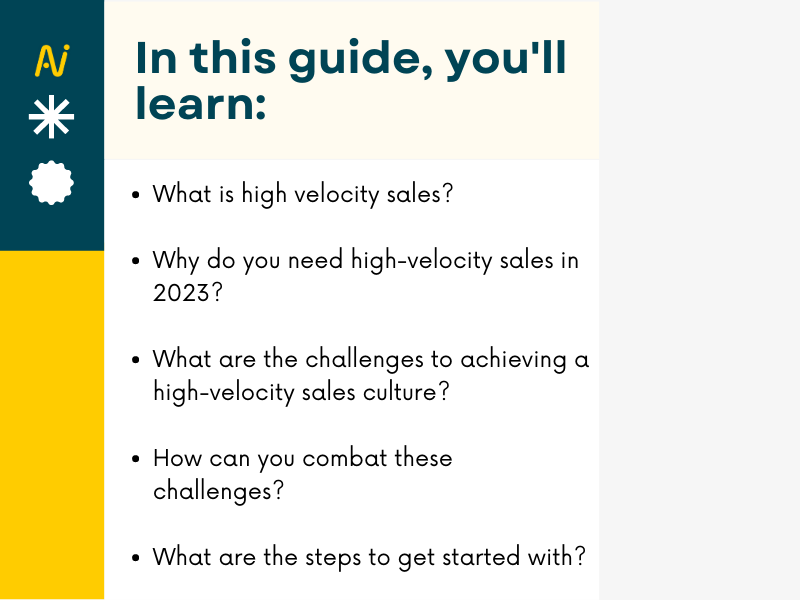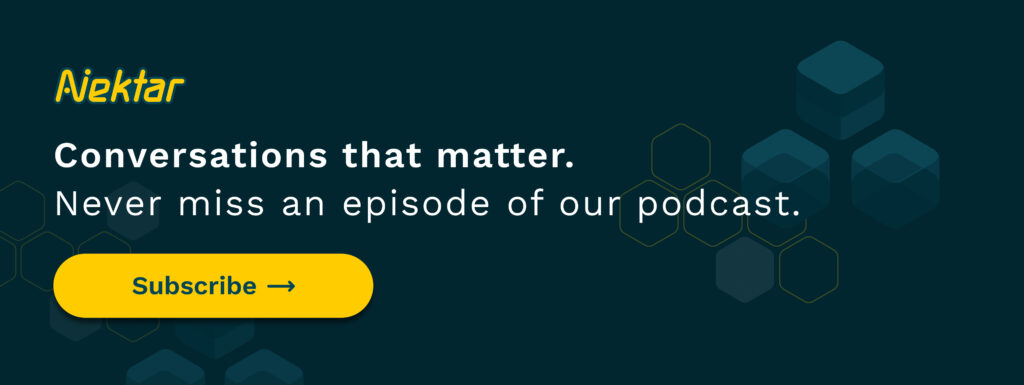Yes, the SaaS market is growing. But so are its challenges. The recent wave of tech layoffs has pushed sales cycles to an average of 46 days and renewals to about 60 days.
Sales teams are under pressure to deliver growth ‘now’. But how do you crank up sales without a proper framework? Enter High-Velocity Sales.

What is High-Velocity Sales?
High-Velocity Sales is a process that makes sales teams more efficient and effective at their jobs.
It aligns with the sales pipeline and funnel to drive both sales efficiency and sales effectiveness.
The two might sound similar. However, sales efficiency is about systems and processes while sales effectiveness is about people skills.
Let’s just put it this way:
Sales Efficiency + Sales Effectiveness = High Velocity Sales
Why Do You Need High-Velocity Sales More Than Ever In 2023?
In Q1 2023, average contract value (ACV) jumped 84% in some SaaS categories like mobile category management. This has impacted sales and renewals.
All eyes are on pipeline optimization and sales strategy.
Implementing a High-Velocity Sales process can give your reps the clarity and purpose they need to deliver consistently.
The big challenges to tackle are:
1. Dirty CRM data
Sales reps spend only 33% of their time selling. A major chunk of this can be attributed to not updating CRM correctly.
Over time, instances of duplicate data or missing information can limit pipeline visibility and cause valuable leads to be lost. The result: low sales effectiveness and revenue impact.
2. Spiralling tech debt
Most B2B sales stack average between 4 and 10 different tools. A lot of the time, the tools aren’t connected with CRM.
And you’re left with disconnected data silos, slow sales follow-ups, and increased IT costs.
Reps spend most of their time troubleshooting technical problems which are bad for growth.
3. Productivity slows to a trickle
Many sales tools have a fair bit of overlap in what they can do.
When reps can’t decide which to use, they return to manual data entry between calls.
The data gaps grow bigger with each passing day resulting in skewed insights and data decay.
Productivity takes a hit.
4. Non-linear buying processes
The B2B buyer journey is evolving. Self-serve is everywhere.
Buyers use multiple channels like third-party user reviews and analyst reports when evaluating options.
And sales reps only get 5 to 6% of the time across the buyer journey.
5. Poor visibility into the pipeline
Buyer turnover, complicated trails, or no access to the decision-maker can stall deals and clog pipelines.
Reps cannot create opportunities if they cannot put a ‘face’ to a given opportunity. The potential for loss increases.
How To Combat These Challenges?
Here are some key best practices for implementing High-Velocity Sales:
1. Streamline data management
A top-down approach can help you identify dirty data and clean it by:
- Checking for and merging duplicate accounts or data
- Deleting old data
- Backfilling missing data with automatic data capture
- Implementing standard file tagging conventions
2. Erase tech debt
A streamlined tech debt process is a key enabler for High-Velocity Sales:
- Define what tech debt means for your function/role
- Set up rules/timeframes for managing tech debt activities. This eases decision-making, resource allocation, and workload for team members.
- Next, define the minimum quality standards for code.
- Adopt DevOps and automation for faster bug resolution. It allows QA manuals to be updated faster and makes iterative development easier.
- Introduce regular code refactoring to optimize performance
3. Enhance productivity
- Automate repetitive non-sales activities like account documentation.
- Integrate the sales stack end-to-end for better visibility and compliance
- Review sales KPIs and align them to your overall business goals
- Enable dashboard view in CRM for reps to track performance metrics and adjust their approach
- On-going coaching can improve performance for both new hires and experienced reps.
4. Optimizing buyer experience
- The sales team is just one of many customer touchpoints in the digital era. So align it strategically with marketing to drive sales.
- Realign your sales funnel to prioritize task completion versus stage completion. This approach provides better deal progression insights.
- In a multichannel scenario, ease of purchase is a top priority. So focus on buyer enablement via high-quality content and self-service as the first line of engagement.
Steps To Start High-Velocity Sales
1. Workflow visibility and team collaboration
Sales teams need to be able to plan, and track activities related to pipeline activity in depth.
Reps can then pick and choose the best deals to go after.
For managers, assigning follow-ups and checking for compliance becomes much easier.
And CRMs like Salesforce High-Velocity Sales offer just that – a seamless interface for both assigning tasks and telling reps exactly what to do.
2. Automate repetitive account maintenance tasks
Sales reps are required to multi-task between meetings and reviews.
Much of this is repetitive work like account documentation and sending meeting invites.
Integrating email or an auto-dialler with CRM can prevent ‘task-switching’ – time lost between toggling screens, manually dialing numbers, etc.
The result: faster response time and better focus.
3. Think multi-channel when planning content
B2B buyers expect a seamless user experience.
Use high-quality content across all major touch points including social media and email.
Put customer needs first with customer journey mapping and analyzing intent data.
4. Coach sales reps to identify key decision-makers
Filtering Excel spreadsheets for buyer role details can be time-consuming.
The attributes may not have been clearly defined or captured in some cases.

How do reps target one or more key decision-makers?
Set up account or deal-level alerts to tell reps who to talk to and when was the last time they were contacted.
5. Provide on-screen cues and recommendations
Going from good to great is doing one or more tasks consistently.
Display product use cases, pricing details, promotions, call scripts, and suggested phrases for reps to use while on chat or phone.
This can make for a smooth call and support learning needs.
6. Define and monitor KPIs
Keeping track of KPIs like time to revenue, win-lose rate, and closing rate – across multiple time intervals and categories – doesn’t have to be tedious.
Tools like Salesforce High-Velocity Sales (or more precisely Einstein Activity Capture) allow you to drill down into sales productivity, lead generation, and pipeline metrics and correlate it to big-picture KPIs with ease.
This gives you a deep perspective on agent performance and potential sticking points.

How Nektar Helps Implement High-Velocity Sales
Nektar helps sales teams at start-ups and enterprise businesses make data-backed decisions for predictable growth amid increasing uncertainty and changing customer preferences.
It offers a comprehensive suite of features that sync seamlessly with your existing sales stack and unlocks growth opportunities – without agent intervention!
With Nektar, you get more control over your sales process than ever before. Make it count!
About Nektar
At Nektar.ai, we are building the world’s first Revenue Efficiency Platform that helps you with two things:
Automatically capture customer interaction data(hidden revenue opportunities) scattered across your revenue lifecycle to plug data holes present in your CRM.
Our RevOps AI then delivers timely insights on your sales process right where you work(Slack) to help you prevent revenue leakage in your funnel.
Transform your Salesforce into a Self Healing CRM with:
- Zero Adoption hassle
- Go live in 3 days
- Value in Under One Week
Say Good Bye to Messy data & revenue leaks. Welcome to Actionable Data & Revenue Efficiency!
PUBLISHED BY








